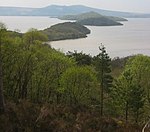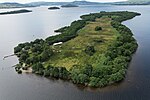Ross Priory

Ross Priory is an early 19th-century country house located west of Gartocharn, West Dunbartonshire, on the south shore of Loch Lomond, Scotland. From the 14th century the estate, known as The Ross, was owned by a branch of the Buchanan family of Buchanan Castle, who built a house here in 1695. The present house is the result of remodelling by James Gillespie Graham and was complete in 1816. The term "priory" does not imply ecclesiastical provenance, but is simply a 19th-century romantic affectation. Sir Walter Scott spent time at Ross Priory in the years following the rebuilding. It was owned by subsequent members of the Leith-Buchanan family until the later 20th century. In 1973 it was sold to Strathclyde University and now serves as a recreational and conference centre. Ross Priory is protected as a category A listed building, and the grounds are included on the Inventory of Gardens and Designed Landscapes in Scotland, the national listing of significant gardens.
Excerpt from the Wikipedia article Ross Priory (License: CC BY-SA 3.0, Authors, Images).Ross Priory
Geographical coordinates (GPS) Address Nearby Places Show on map
Geographical coordinates (GPS)
| Latitude | Longitude |
|---|---|
| N 56.0546 ° | E -4.5473 ° |
Address
G83 8NJ
Scotland, United Kingdom
Open on Google Maps









